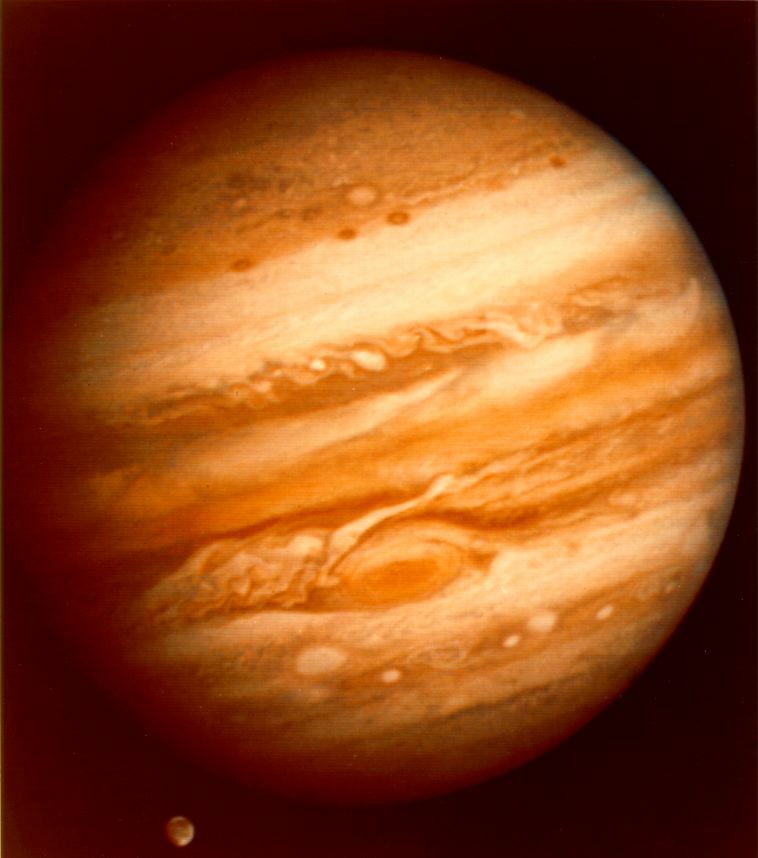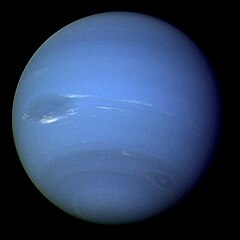Jupiter
- Jupiter at 318 Earth masses, is 2.5 times the mass of all the other planets put together. It is composed largely of hydrogen and helium. Jupiter's strong internal heat creates a number of semi-permanent features in its atmosphere, such as cloud bands and the Great Red Spot.Jupiter has 67 known satellites.

Saturn
- Saturn distinguished by its extensive ring system, has several similarities to Jupiter, such as its atmospheric composition and magnetosphere. Although Saturn has 60% of Jupiter's volume, it is less than a third as massive, at 95 Earth masses, making it the least dense planet in the Solar System. The rings of Saturn are made up of small ice and rock particles.
- Saturn has 62 confirmed satellites; two of which, Titan and Enceladus, show signs of geological activity, though they are largelymade of ice.[81] Titan, the second-largest moon in the Solar System, is larger than Mercury and the only satellite in the Solar System with a substantial atmosphere.

Uranus
- Uranus at 14 Earth masses, is the lightest of the outer planets. Uniquely among the planets, it orbits the Sun on its side; its axial tilt is over ninety degrees to the ecliptic. It has a much colder core than the other gas giants, and radiates very little heat into space.[82]
Neptune
Neptune though slightly smaller than Uranus, is more massive (equivalent to 17 Earths). It radiates more internal heat, but not as much as Jupiter or Saturn.Neptune has 13 known satellites. The largest, Triton, is geologically active, with geysers of liquid nitrogen. Triton is the only large satellite with a retrograde orbit. 
PLEASE GIVE COMMENT.

No comments:
Post a Comment